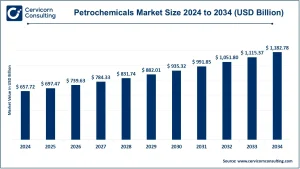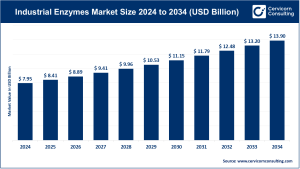3D Printing Construction Market Overview
The global 3D printing construction market is experiencing significant expansion as digital fabrication continues to redefine how infrastructure and buildings are designed and built. The market was valued at USD 1.78 billion in 2024 and is forecasted to reach USD 11.03 billion by 2034, growing at a CAGR of 19.6% between 2025 and 2034. This rapid trajectory is attributed to the rising emphasis on sustainable, automated, and cost-efficient building processes. The adoption of robotics, advanced materials, and AI-powered design tools is revolutionizing both residential and commercial construction landscapes.
Key Market Trends
1. Advancements in Large-Scale 3D Printing Technology
Modern construction printers now enable the creation of multi-story structures using materials such as concrete, geopolymer, and composites with enhanced accuracy. Industry innovators like COBOD International and ICON are pioneering developments in robotic printing systems, automated material processing, and multi-axis printing. These technologies have shortened project timelines from weeks to days, establishing 3D printing as a practical method for various construction applications.
2. Rise of Sustainable and Green Construction Solutions
Environmental responsibility continues to shape market evolution. The adoption of recyclable materials, low-carbon cement, and geopolymer mixes is reducing ecological footprints. Across Europe and Asia, construction projects leveraging 3D printing have achieved up to 60% waste reduction compared to traditional methods. Additionally, local material sourcing helps lower transportation emissions and costs, aligning with global sustainability goals.
3. Expanding Government Support and Policy Backing
Governments are increasingly recognizing 3D printing as a strategic technology for sustainable development. For example, the UAE’s goal to 3D print 25% of all new buildings by 2030, and innovation grants in the U.S. and Singapore, are driving adoption. Updated regulations and public funding initiatives are fostering commercialization and encouraging private-sector partnerships in construction innovation.
4. Growing Popularity of 3D-Printed Affordable Housing
As global housing demands surge, 3D printing is emerging as a viable solution for rapid, low-cost housing. Companies like Apis Cor and Mighty Buildings are creating modular units that can be printed in under 48 hours at costs 30–40% lower than conventional methods. Governments across Latin America and Africa are implementing pilot projects to address affordable housing shortages using this technology.
5. Integration of BIM and AI in Design Optimization
The combination of Building Information Modeling (BIM) and AI-driven design tools is improving project efficiency and resource utilization. These integrations enhance structural accuracy, optimize material use, and facilitate real-time monitoring. This synergy supports the emergence of digitally integrated construction ecosystems, connecting design, production, and execution in one streamlined process.
👉 Get a Free Sample: https://www.cervicornconsulting.com/sample/2792
Market Drivers
1. Rising Demand for Cost-Effective Construction Solutions
Additive manufacturing dramatically lowers project expenses by minimizing waste, labor, and build time. Research indicates that 3D printing can reduce total construction costs by 20–50%, making it a compelling option for both developers and public-sector projects.
2. Accelerating Urbanization and Housing Initiatives
Rapid urbanization is intensifying the need for scalable housing solutions, especially in emerging markets like India, Mexico, and Saudi Arabia. 3D printing’s ability to deliver durable and customizable structures at scale aligns perfectly with these growing demands.
3. Continuous Technological Innovation
Progress in robotic automation, advanced material extrusion, and AI-assisted printing is expanding the capabilities of 3D construction. New-generation printers allow for more complex, precise designs, enhancing overall project quality and speed.
4. Commitment to Sustainability and Resource Optimization
3D printing supports sustainable development goals (SDGs) by curbing material waste and enabling the use of eco-friendly composites such as green cement and recycled aggregates. These factors are reinforcing the market’s environmental and economic value proposition.
5. Strategic Collaborations and Funding Programs
Partnerships between technology developers, contractors, and government bodies are fostering large-scale innovation. A prime example is ICON’s collaboration with the U.S. Department of Defense, focused on building 3D-printed military housing and infrastructure—demonstrating institutional confidence in the technology’s potential.
Impact of Trends and Drivers
The combined influence of these market trends and drivers is transforming the construction value chain:
- Residential Sector: Witnessing rapid adoption for low-cost and modular housing projects.
- Commercial Sector: Growing interest in 3D-printed offices, pavilions, and mixed-use developments due to design versatility and faster project delivery.
- Regional Insights: North America leads in technological deployment, while Asia-Pacific represents the fastest-growing region, driven by infrastructure expansion and government-backed smart city programs.
Challenges and Opportunities
Challenges:
- High upfront investment for industrial-scale printers.
- Lack of unified construction standards and material certifications.
- Shortage of skilled professionals in digital fabrication.
Opportunities:
- Expanding applications in smart city initiatives and infrastructure modernization.
- Growth of offsite modular 3D printing facilities.
- Advancements in eco-material R&D and autonomous construction robotics.
Future Outlook
The 3D printing construction market is set to revolutionize global building methodologies over the next decade. With an anticipated CAGR of 19.6% through 2034, the sector is transitioning from pilot demonstrations to commercial-scale deployments. The fusion of AI, robotics, and sustainable materials will drive further scalability, cost-efficiency, and environmental resilience. By 2034, 3D-printed infrastructure is expected to become an integral element of modern, sustainable urban development worldwide.
For deeper insights and a comprehensive report, visit Cervicorn Consulting – 3D Printing Construction Market.

